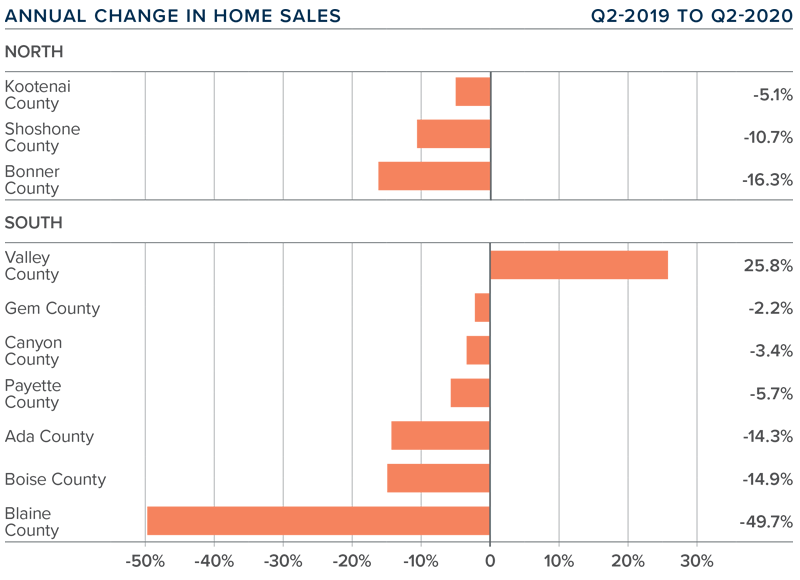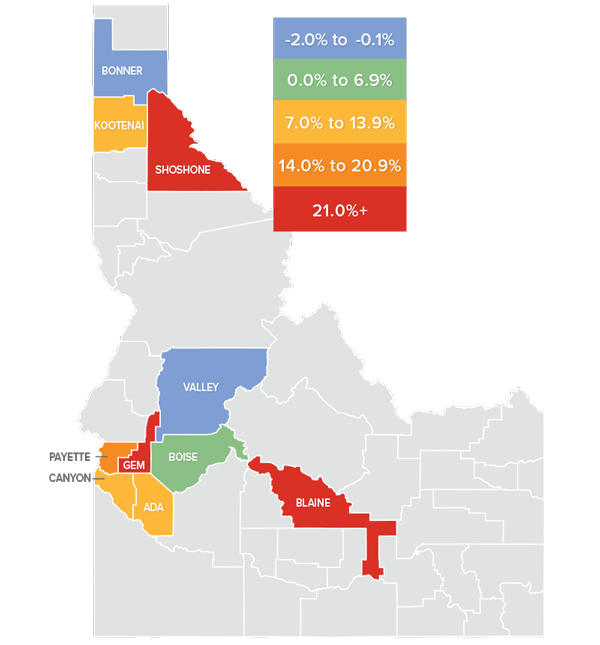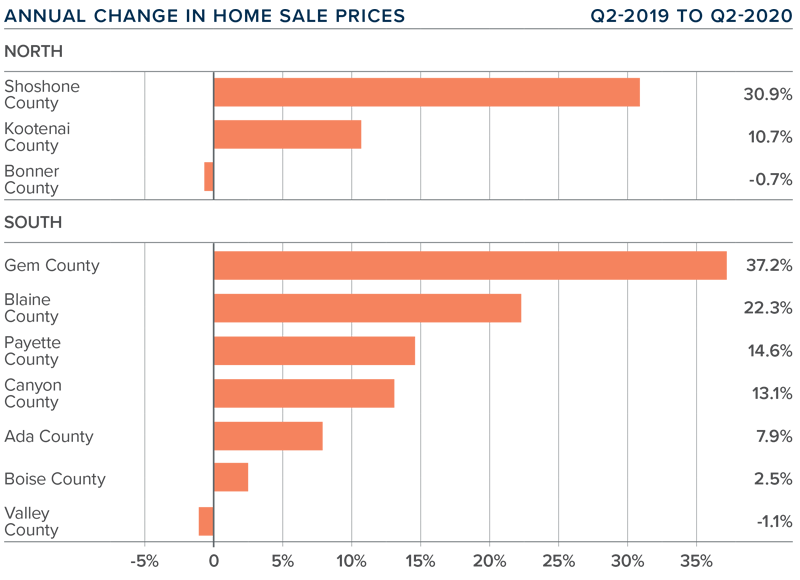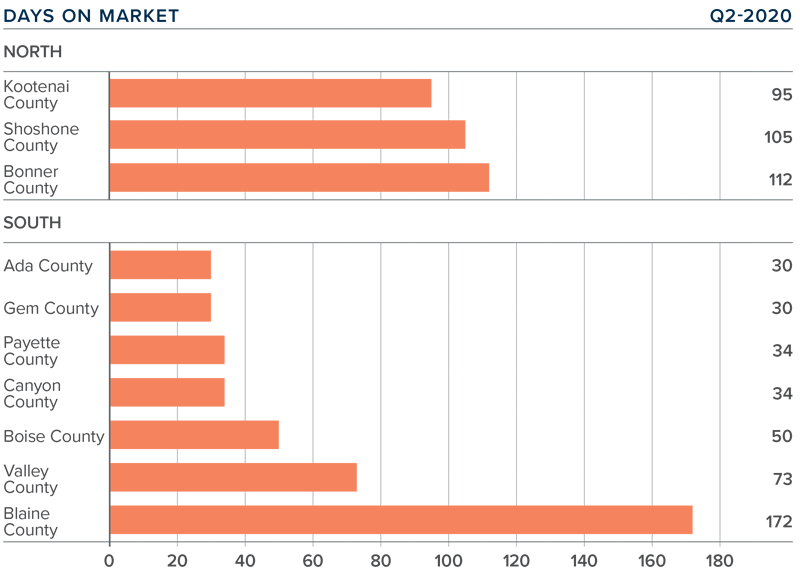The following analysis of select counties of the Idaho real estate market is provided by Windermere Real Estate Chief Economist Matthew Gardner. We hope that this information may assist you with making better-informed real estate decisions. For further information about the housing market in your area, please don’t hesitate to contact your Windermere agent.
ECONOMIC OVERVIEW
It appears as if the significant COVID-19-induced contraction in employment Idaho experienced earlier this year is behind us (at least for now). Statewide employment declined modestly in March, but April was the real shock, with the loss of more than 78,000 jobs in the month, a decline of 10.2%. However, the economy appears to have turned around remarkably quickly, with a solid increase of 24,300 jobs in May. Idaho did see COVID-19 cases rise significantly in June, but the latest data appears to suggest that the trend has started to reverse. If this continues, I am hopeful more of the jobs lost will return.
HOME SALES
- During the second quarter of 2020, 6,264 homes were sold, a drop of 10.6% when compared to the second quarter of 2019. However, I would note that sales rose 22.2% compared to the first quarter of this year.
- In the southern markets, sales rose in small Valley County, but dropped in the rest of the counties covered in this report compared to the same period a year ago.
- Year-over-year, sales growth was negative in all of the Northern Idaho counties contained in this report. The most substantial drop was in Bonner County, though the decline there amounted to only 37 units.
- Pending sales rose a significant 18% over the first quarter of the year, suggesting that closed sales will rise in the third quarter.

HOME PRICES
- The average home price in the region rose 8.2% year-over-year to $387,293. Sale prices were 1.2% higher than in the first quarter of 2020.
- In Northern Idaho, Shoshone County saw prices rise significantly. In Southern Idaho, Gem County experienced substantial price growth.
- Prices rose in two of three Northern Idaho counties and in six of seven Southern Idaho counties. Bonner and Valley counties saw lower sale prices, but the contractions were minimal.
- Inventory levels were down 17% from a year ago, but were 14% higher than in the first quarter. The “postponed” spring market may turn into a summer one.

DAYS ON MARKET
- It took an average of 104 days to sell a home in Northern Idaho and 60 days in Southern Idaho.
- The average number of days it took to sell a home in the region dropped 2 days compared to the second quarter of 2019. It took an average of 24 fewer days to sell a home compared to the first quarter of this year.
- In Northern Idaho, days-on-market dropped in Bonner County, but rose in the other two counties. In Southern Idaho, market time dropped in four counties, was static in one, and rose in Blaine County.
- Homes sold fastest in Gem and Ada counties.

CONCLUSIONS
 This speedometer reflects the state of the region’s real estate market using housing inventory, price gains, home sales, interest rates, and larger economic factors.
This speedometer reflects the state of the region’s real estate market using housing inventory, price gains, home sales, interest rates, and larger economic factors.
I was pleased to see listings, pending sales, closed sales, and home prices all rise from the first quarter of this year. Demand appears to be relatively solid, which suggests that it remains a seller’s market, especially when combined with historically low interest rates. I do not see this changing in the foreseeable future.
The overall housing market has exhibited remarkable resilience, and housing demand has rebounded faster than most would have expected. But given ongoing uncertainty about COVID-19, I am leaving the needle above in the same position as last quarter.
ABOUT MATTHEW GARDNER
 As Chief Economist for Windermere Real Estate, Matthew Gardner is responsible for analyzing and interpreting economic data and its impact on the real estate market on both a local and national level. Matthew has over 30 years of professional experience both in the U.S. and U.K.
As Chief Economist for Windermere Real Estate, Matthew Gardner is responsible for analyzing and interpreting economic data and its impact on the real estate market on both a local and national level. Matthew has over 30 years of professional experience both in the U.S. and U.K.
In addition to his day-to-day responsibilities, Matthew sits on the Washington State Governors Council of Economic Advisors; chairs the Board of Trustees at the Washington Center for Real Estate Research at the University of Washington; and is an Advisory Board Member at the Runstad Center for Real Estate Studies at the University of Washington where he also lectures in real estate economics.
 Facebook
Facebook
 X
X
 Pinterest
Pinterest
 Copy Link
Copy Link



